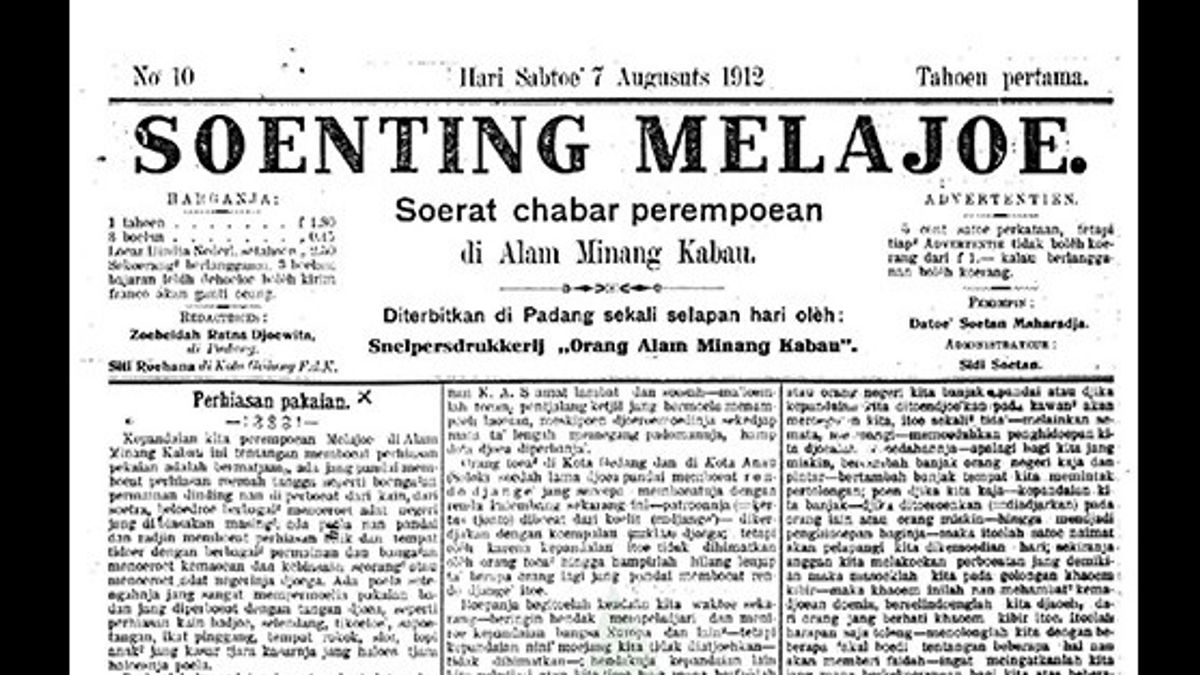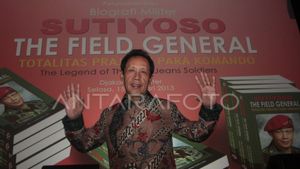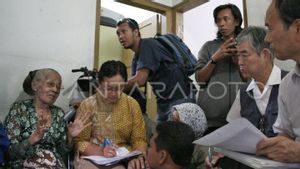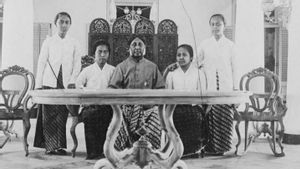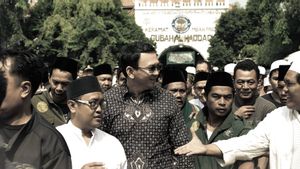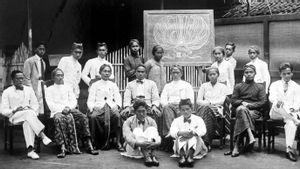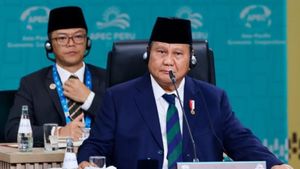JAKARTA History today, 111 years ago, July 10, 1912, the newspaper the movement of women, Soenting Melajoe was published. There is the name Roehana Koeddoes as his intellectual actor. The presence of the newspaper is an affirmation that women are not inferior to men. Especially about struggle.
Previously, the press had a big role in shaping the fighting spirit of the bumiputras. The press became a tool for national figures to spread information, as well as oppose the rule of the Dutch colonialists.
The power of the press cannot be underestimated in the history of the Indonesian nation. The media broadcast of news from newspapers to magazines can be transformed into a tool of struggle. National figures often take advantage of it.
Some of them took part in contributing to their thoughts in writing in the mass media. Some of them are even building mass media and actively writing. The power of the press has also become big in the era of the national revival. Take the movement of Tirto Adhi Soerjo, which aired a Malay language newspaper, Medan Prijaji.
He was able to take advantage of the press's role in spreading criticism of the invaders since 1907. The behavior of racist and corrupt Dutch officials is often his month. Even though Tirto Adhi Soerjo later received an exile because he was too critical.
The same narrative was also presented by Tiga Serangkai Soewardi Soerjaningrat (later known as Ki Hajar Dewantara), Tjipto Mangoenkoesoemo, and Ernest Douwes Dekker. The three national figures are actively working on the De Express newspaper. A newspaper that often makes the Dutch angry.
The writings published have a big influence. Instead of only making the Dutch hot, the writing was also able to ignite the fire of the struggle against Dutch colonialism. The critical narrative in the style of Tiga Serangkai also received opposition. However, the struggle never went out.
The mass media in Indonesia has a historical background that is closely related to the national movement to fight for national independence, and with it a struggle to improve people's lives. Radio Republic of Indonesia (RRI) serves as an effective means of communication to sacrifice the spirit of the people in the war of independence.
"Meanwhile, the press, such as in various other Asian countries, will soon become one of the mechanisms for national movement leaders to spread their ideas. Famous movement figures such as Soekarno, Hatta, Sjahrir, H. Agus Salim, and Sam Ratulangi are regular writers in newspapers or (some) instead take care of their own issuance during the era of national movement," explained Jakob Oetama in the book Pers Indonesia (2001).
Those who are active in the press era of the national revival are in fact not just the monopoly of men. Women also wrote their names on the press map of the national movement. All of this boils down to the presence of a newspaper initiated by an emancipatory figure from Minangkabau, Roehana Koeddoes.
The Soenting Melajoe newspaper, his name. The management is dominated by women. From editors to writers. The newspaper was published for the first time on July 10, 1912. It contains a lot of confusion about the aspirations of the Bumiputra women. they do not want to lose to the men. Especially about the struggle for independence.
另请阅读:
The initial coverage of Soenting Melajoe was Minangkabau land, then spread throughout Java. The narrative then made the name Roehana Koeddoes able to side by side with the name RA Kartini as a fighter of the emancipation of Bumiputra women.
In Padang, West Sumatra, in an effort to establish the Amai Setia Crafts school led by Rohana Kudus, on July 10, 1912 was also issued by the Soenting Melajoe newspaper. This newspaper is the spreader of the idea of establishing Amai Setia.
"Furthermore, this newspaper is the center of activities of both girls and women who are married. The newspaper is the medium in conveying recommendations for the rise of women and expressing the thoughts of the authors in the form of pros and poetry," said GA Ohorella and friends in the book The Role of Indonesian Women in the National Implementation Period (1992).
The English, Chinese, Japanese, Arabic, and French versions are automatically generated by the AI. So there may still be inaccuracies in translating, please always see Indonesian as our main language. (system supported by DigitalSiber.id)
